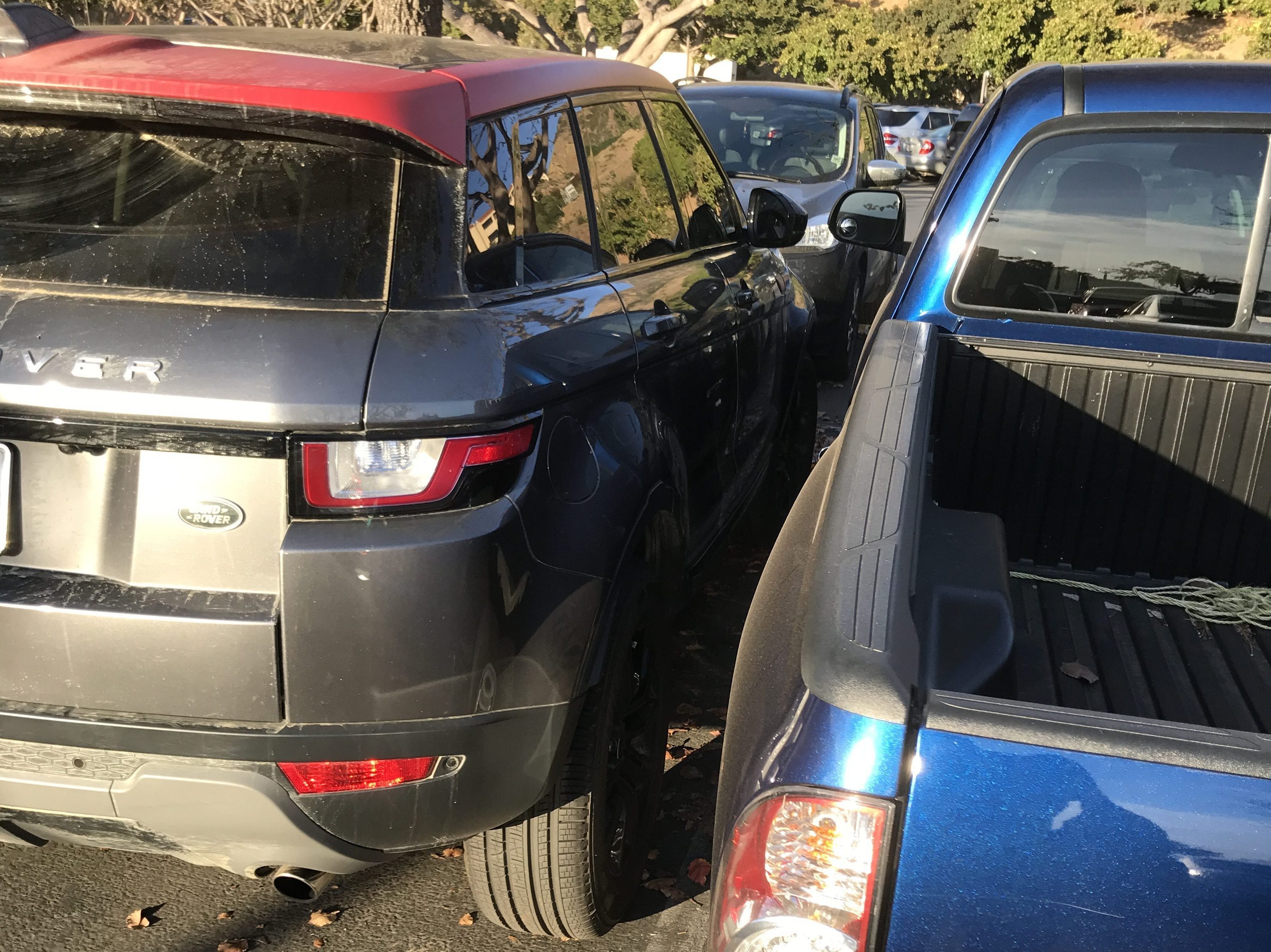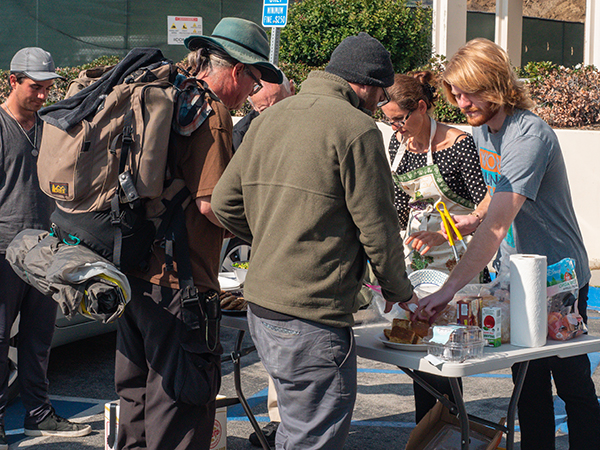
The California Coastal Commission, Malibu City Council members and Malibu homeowners are apart of an ongoing struggle that pits beach accessibility against safety concerns.
The Coastal Commission wants to follow mandates set out by the California Coastal Act of 1976 that ensure public beach access. Malibu City Council members and Malibu homeowners are worried about the safety of residents and visitors due to high traffic and difficult parking near access points.
“Beaches are not owned by city, they are county beaches, state beaches but it is our town and we do have to take responsibility for our visitors and the safety of the people at the beaches,” Malibu City Councillor Rick Mullen said.
Malibu City Council and the California Coastal Commission are currently reviewing solutions to resolve parking issues after a dispute over a city plan to remove what the city felt were 660 unsafe parking spots but that the commission viewed as critical to maintaining beach accessibility.
Parking issues on the beaches
John Mazza, Malibu City Council planning commissioner, said the biggest problem facing accessibility is parking.
The minimum parking requirements for a parking spot is 8-feet wide by 24-feet long, according to a Pacific Coast Highway parking study the city commissioned. The study found that there were parking spaces along the highway that do not meet these requirements and it proposed eliminating a net total of 660 spots.
Linda Locklin, public access program manager for the California Coastal Commission, wrote a letter to the Malibu City Council expressing her disappointment with this outcome.
“Our central observation is that there is an array of alternatives to the Draft Recommendation to eliminate over 660 parking spaces,” Locklin wrote.
Locklin also said the California Coastal Commission cares deeply about public safety but if parking is going to be removed then it needs to be replaced.
“Every site is site specific of course,” Locklin said. “We all want safe conditions but we also want to make sure that if we remove parking on PCH because of safety issues we want to make sure it is replaced nearby.”
Mayor Skylar Peak and other councillors are concerned that the California Coastal Commission will nix other city plans to alter beach parking.
Councillors discussed plans to restrict oversized vehicles from parking on PCH at the Nov. 27 meeting. They also want to implement parking meters at different locations around the city. These plans will help offset the possible elimination of 660 parking spaces by freeing up more parking near the beach. Councillors think these plans will aid beach access, but they are unsure the Coastal Commission will see it in the same light.
When the Coastal Commission doesn’t approve a plan, like what happened with the 660 spaces, the city council has few options, Mazza said.
“The only thing they can do is sue Coastal and that’s a losing deal because Coastal’s attorney is the attorney general of California so you’re just going to rack up your legal bills,” Mazza said.
Social media and El Matador State Beach
Malibu city officials said that with inadequate parking and a huge increase in visitors, there is a greater potential for danger.
“I would say that the age of the smartphone and the huge increase in visitors in last 10 to 15 years makes these friction points,” Mullen said. “And when I say that I mean potential safety issues, like people parking along highway … that creates problems.”
El Matador State Beach is a public beach with a small parking lot that saw a surge of popularity due to smartphones and social media.
“So all of a sudden you had 300 to 400 cars showing up at El Matador, parking on the highway and last summer they killed somebody running across the highway,” Mazza said.
A trip to El Matador State Beach turned deadly on July 2, 2016. As Spencer Wickander crossed Pacific Coast Highway at 5:25 p.m., a car struck Wickander and another young woman, according a City News Service article published in Los Angeles Daily News. Wickander died and the young woman was seriously injured.
A Pacific Coast Highway safety report states that most of the parking on PCH near El Matador does not meet minimum requirements.
In a PCH parking study, Stantec Consulting wrote that there were nine pedestrian collisions that resulted in fatalities in their five-year analysis.
“Pedestrian collisions almost always result in injuries and pedestrians were involved in a majority of the fatal collisions,” the Stantec Consulting wrote.
Caleb Perkins, senior business administration major, said El Matador is one of his favorites to go to but that it gets dangerous on busy days.
“By Matador, when you have to park on the far side, on the land side of PCH, it is kind of sketchy crossing PCH to go to the other side,” Perkins said. “Especially if it’s on a busy day like on a Saturday that definitely feels unsafe.”
Safety surrounding accessibility
The Malibu residents and the city council said problems also arise around beach access paths.
Malibu resident Marilyn Dove said she wants the gates where the accessways are to be locked at night because of safety issues.
“Well, the gate should be locked at night because people come down they have their fire,” Dove said. “The other issue is when they bring booze and that happens at night so it really should be locked at night.”
Dove thought it was a serious issue, especially after a fire back in 2007. An improperly discarded cigarette stub started a fire in January 2007 that burned down four houses late at night on Malibu Road, Jessica E. Davis wrote in a 2013 Malibu Patch article.
Mullen said smaller beaches don’t usually any have public facilities.
“Definitely less parking there, definitely less supervision,” Mullen said. “There’s less facilities amenities, like bathrooms and things like that, I don’t think there are lifeguards at any of them.”
Senior music major Wesley Park said that even though these beaches don’t have lifeguards, he relies upon his knowledge of the ocean to keep him safe.
“Just knowing whether you should go in the water or not because a lot of bad things happen when people don’t know they shouldn’t go in the water when the swell is like over 4 feet,” Park said.
Jacob Johnston, a senior sports medicine major, concurred with Park, saying he also relies on his experience and knowledge of the ocean to keep him safe.
“It doesn’t really matter to me if there’s a lifeguard there,” Johnston said. “I guess just cause like I think I know like when I can handle being in the ocean and when not.”

Accessible beaches
There are 39 accessible public beaches in Malibu, according to a PCH parking study.
The accessible beaches in Malibu start at Topanga Beach and go up to Leo Carillo State Beach in Western Malibu. Both of these beaches are publicly accessible with parking lots available to visitors. Additionally, there are beaches like Zuma and Surfrider that are public beaches that attract large amounts of visitors.
Mullen said Zuma Beach satisfies the desires of beachgoers. It’s a giant beach and it has plenty of parking.
“So Zuma is a great example, probably the best example, of large amount of people coming out to the town and being able to enjoy the beach and have enough parking and have a great experience,” Mullen said.
Pepperdine students frequently visit Zuma as well.
“I usually go to Zuma or Ralph’s beach,”Johnston said. “Because they’re the closest and cleanest and they’re usually like not that crowded.”
Mullen said there exists beaches called “pocket” beaches. These are beaches like La Piedra and El Matador State Beach that have small parking lots and little amenities but beautiful locations.
Easements grant access to the pocket beaches. Easements are routes such as staircases that provide access through private property to beaches, according to a California Coastal Commission document.
Malibu residents are not eager to offer easements to visitors. In 2015, the California Coastal Commission forced Malibu homeowners on Carbon beach to open a new accessway, Ann O’Neill wrote in a July 2015 CNN article.
Malibu resident Mike Roberts believes that it is important for the public to have access to these beaches.
“I think they’re great,” Roberts said. “I mean not a ton of people know about them but I think it’s important for the public to have access to these beaches.”
Duncan Hilby completed the reporting for story under the supervision of Dr. Christina Littlefield and Dr. Theresa de los Santos in Jour 241 in fall 2017. Dr. Littlefield supervised the writing of the web story.



